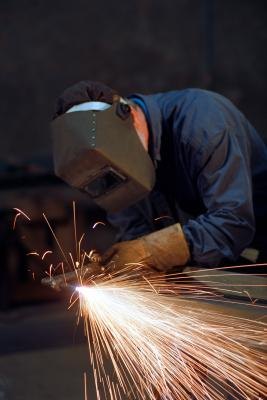How Do I Repair AISI 4140 Shaft Material With Welding
Sunday, March 16, 2014 | Labels: 4140, aisi, do, how, i, material, repair, shaft, welding, with | |
Welding hard steel, such as 4140 steel, is a complicated process that involves heating levels that are unusual to achieve in a home workshop. However, in the right shop, it is possible. You will need a good oven and good welding skills to accomplish this task, but as long as you have the right facilities, it will not be a complicated procedure. AISI ers to the American Iron and Steel Institute and its industry-accepted steel standards; AISI 4140 is a versatile alloy steel used in many industrial applications, including plating and shafts, and is easily weldable with traditional methods.
Instructions
- 1
Heat the damaged steel to about 1,250 degrees Fahrenheit.
2Match weld material to 4140 metal, including a minimum of 1.25 percent manganese, 1.75 percent nickel, 0.3 percent chromium and 0.25 percent molybdemum. If repairing a crack, this filler metal should be lower in carbon than AISI 4140, which has up to 40 percent carbon content, to prevent development of a brittle layer called martensite and possible future cracks.
3Use softer filler metal in building up a shaft for re-machining, followed by a harder layer. This buffer layer should be very low in carbon content to prevent carbon from leaching into the hard-facing layer, one of several specialized alloys, causing it to crack quickly. The hard-facing layer should be thin, as thicker layers will, counterintuitively, fail faster than thinner layers. Preheating, as mentioned above, is vital to prevent distortion and failure of the hard facing, which will lead to rapid erosion of the buffer layer.
4Cool the steel very gradually by placing an insulated welding blanket over the bar or by burying it in sand. Rapid cooling will cause the layers to distort and spoil the job. The piece should not cool more than 150 degrees Fahrenheit per hour; for large parts, this may require a temperature-controlled furnace to cool the part precisely.
Post a Comment